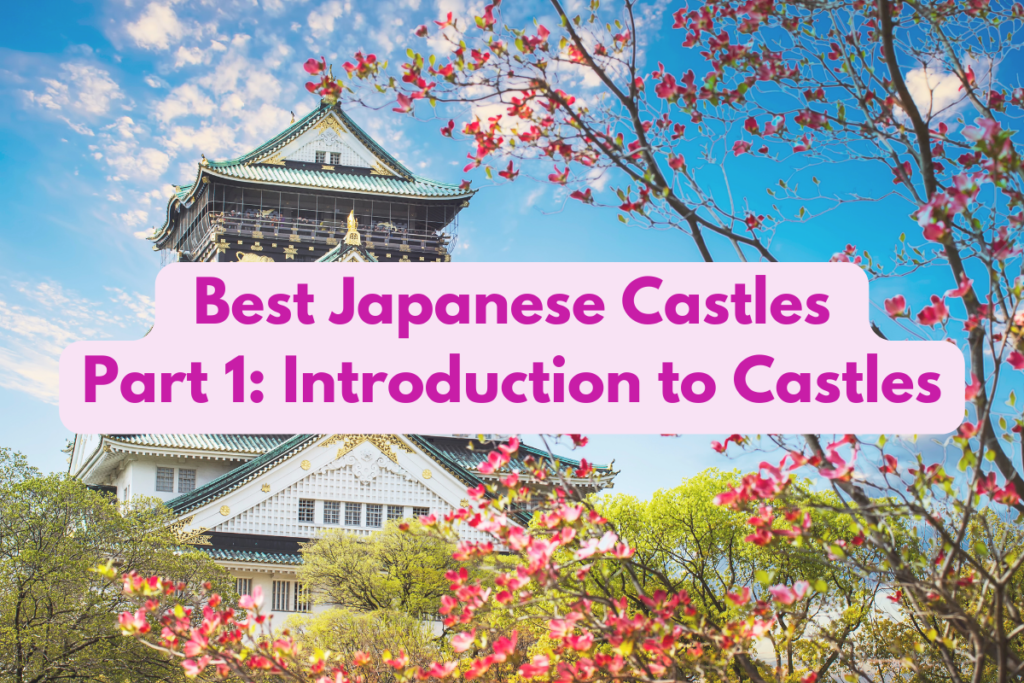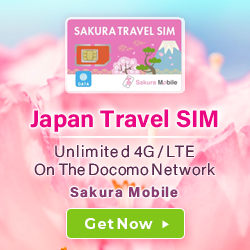Welcome to our new Best Japanese Castle Series, a fantastic journey through time and tradition where we dive deep into the fascinating world of Japanese castles!
Throughout this series, we will cover the history and basics of Japanese castles and the best Japanese castles to visit throughout Japan! We will also include tips and advice to make your trip an unforgettable experience and take full advantage of the castles during your visit. This is a series you do not want to miss out on! Be sure to check out our blogs for future updates!
In Part 1 of this series, I will explain the basic information about Japanese castles, which will enrich your experience in Japan. Let’s get started!

Best Japanese Castles Series Part1: Japanese Castle Basics
Table of Contents
Background of Japanese Castles

Stepping into a Japanese castle is like stepping into a real-life history book because it reflects the Japanese epic battles era. Trust me, it’s fascinating! Japanese castles are one of the most famous tourist spots in Japan for travelers because they symbolize Japanese history and culture. Observing Japanese castles will make you appreciate the originality of each castle, and you will have a better understanding of them and imagine traditional Japanese life while you visit the castles.
1. History of Castles and the Role of the Yayoi Period ~ Current Times
-
弥生Yayoi Period (300 BCE ~ 300 CE) (Protected harvests from animals)

Japanese castles have a long history dating back to the Yayoi period. During this period, Japanese people developed rice farming and metalworking, such as dotaku, which are ritual bells. The Japanese began building moats to protect themselves from animals, which was the beginning of the moats. They later built the walls when people began to start conflicts over resources, so the moated settlement has been the defense system to protect enemies since then. Those moats and walls were used during this era and became the foundation of the Japanese castle.
-
戦国Sengoku Period 1467-1615 (Protected Shogun from enemies)

From the Sengoku period (late 15th and 16th centuries), the “Warning States” period was an intense civil war over territorial disputes throughout the country. At that time, Shogun, a military leader, ruled the regions of Japan. Shoguns lived in their houses at the castle to protect themselves from attacks and control over the territory. Living in the castle shows the Shogun’s power as they have authority over the territory. Therefore, during this Sengoku era, constant military conflict led to the establishment of many Japanese castles.
-
明治Meiji Period 1868-1912 (The government demolished castles)
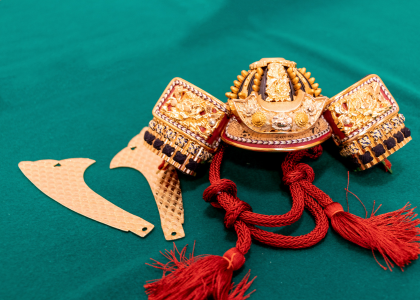
Between 1596 and 1615, around 100 castles were built around Japan, spreading surrounding cities and townships. Now, we have more than 200 castles remaining here, but the original castle was only 12 of the original castles that survived the Meiji Restoration of 1868. The Meiji Restoration was a significant turning point in Japanese history since the military government ended the Edo period (1603-1867). During the Meiji period, most of the Japanese castles were demolished by the government since they made efforts to westernize the form of the society by introducing a series of reformations. The government thought that old Japanese castles were useless, and the cultural values were ignored to modernize the society. They enacted 廃城条, Haijorei, Castle abolishment law in 1873.
-
Current Times

In recent times, Japanese castles serve three main roles in Japan.
1). Tourist Attraction
Many Japanese castles are famous tourist spots in the region because each castle has its own history and characteristics.
2). Cultural and Historic Preservation
Japan has a long history, and castles allow us to feel Japan’s past. For example, some castles have museum labels on the walls or inside. This is crucial for maintaining cultural diversity, fostering identity, and strengthening cohesion in the community.
3). Educational Opportunity
Some Japanese castles have their castle’s museums and exhibitions near the castle. This plays a vital role in helping people understand the significance of castles and people’s lives from long ago.
2. Types of Japanese Castle
There are four types of castle names based on the location.
-
山城, Yamajiro
These castles were built high up on hills or mountains. The Yamajiro takes advantage of the natural resources as defense mechanisms of a castle to protect its castles from enemies. This natural defense includes mountain streams, valleys, steep trails, and so on. For example, there is Inuyama Castle.
-
平山城, Hirayamajiro
These castles were built to combine the advantages of heights and those of the plain. A castle was built on a hill, easily overlooking the plain. For example, there is the Himeji castle
-
平城, Hirajiro
It means a plain castle. It corresponds to the castles built during a more peaceful period. It played more political and economic purposes than strategic. For example, there is Nijo-jo
-
水城, Mizujiro
These castles are in the water. The castles face the sea and take advantage of the latter as protection. For example, there is Imabari-jo.
3. Japanese Famous Castles in Western and Eastern Japan
You can visit as many beautiful Japanese castles as you like. However, if you don’t have enough time to stay in Japan, I recommend visiting two castles.
-
二条城, Nijo-castle
I recommend you visit Nijo-jo, located in Kyoto. There are many historical architectures since Kyoto was Japan’s “Capital City” for more than 1,000 years before the Meiji Restoration. The castle was built in 1603 during the reign of the top Japanese Shogun, Tokugawa. The castle was designated a UNESCO World Heritage Site in 1994.
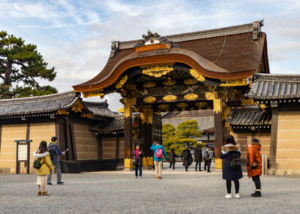 Location: Nijo-jo-cho, Horikawa-nishi-iru, Nijo-jo-dori, Nakagyo-ku, Kyoto-city. It takes around 20 minutes from Kyoto station. You can check more specific access information from the official Nijo-jo website.
Location: Nijo-jo-cho, Horikawa-nishi-iru, Nijo-jo-dori, Nakagyo-ku, Kyoto-city. It takes around 20 minutes from Kyoto station. You can check more specific access information from the official Nijo-jo website.
Opening Hours: 8:45 AM – 4:00 PM (closing time 5:00)
Admission: Adults: 1,300 yen, Junior High & High School Students: 1,100 yen. This price includes Ninomaru Palace, designated as a National Treasure, where you can see gorgeous palace wall paintings and exquisite metalwork fitting in the room.
-
弘前城, Hirosaki-castle
As you can see, you will enjoy seeing Sakura, also known as cherry blossoms, while visiting Hirosaki-castle. There are more than 2,500 cherry blossom trees in Hirosaki Park, so you can enjoy watching them and seeing the illuminations in the evening. Hirosaki Castle was built in 1611 by the Tsugaru Clan and is one of their castles.
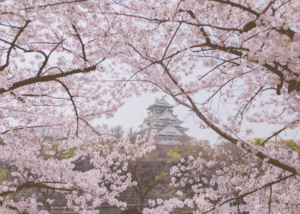 Location: Shimoshiroganecho, Hirosaki, Aomori (Tohoku region, Northeast Japan). It takes around 15 minutes to get to Hirosaki station by bus or 30 minutes to walk from the station.
Location: Shimoshiroganecho, Hirosaki, Aomori (Tohoku region, Northeast Japan). It takes around 15 minutes to get to Hirosaki station by bus or 30 minutes to walk from the station.
Opening Hours: 9:00 AM – 5:00 PM、7:00 AM-9:00 PM (during spring season)
Admission: Adult 320 yen (only castles), 520 yen (castles and botanical garden). Children 100 yen (only castles), 160 yen (castles and botanical garden).
![]() This basic information may change depending on the date or situation, so please check each official website for the latest information.
This basic information may change depending on the date or situation, so please check each official website for the latest information.
4. Tips for International Travelers

Visiting these Japanese castles will be a wonderful experience if you know the following valuable tips. I will explain five tips that will make your experience even better.

1) Check the Castle
It’s essential to research the castle you want to visit beforehand. You can generally research the castle’s address, opening hours, admission fee, visiting etiquette, etc. You can find the basic information on the official Japanese castle’s website. Some of this is available in English, so you can get much of the necessary information from the official website.

2) Belongings & Outfits
Belongings: You should have a backpack because you can use both hands freely and fit all your necessary goods (towel, purse, jacket, etc.). Regarding other must-bring items, I highly recommend bringing insect repellant, which can keep mosquitoes away from you because there are many mosquitoes here during the summer.
 Outfits: When it comes to outfits, it’s better to avoid revealing clothing, especially inside the castle’s exhibition. Also, you will need to take off your shoes in some places, so it’s good for you to bring socks. You should check if the castle is located in the mountain (Yamajiro castle-type), and if the castle is on a mountain, you will need to go up many stairs to get into the castle, so your outfits should be comfortable to move around in. In addition, you should avoid sandals when you visit the Yamajiro as there are many bugs!
Outfits: When it comes to outfits, it’s better to avoid revealing clothing, especially inside the castle’s exhibition. Also, you will need to take off your shoes in some places, so it’s good for you to bring socks. You should check if the castle is located in the mountain (Yamajiro castle-type), and if the castle is on a mountain, you will need to go up many stairs to get into the castle, so your outfits should be comfortable to move around in. In addition, you should avoid sandals when you visit the Yamajiro as there are many bugs!
 3 ) Audio Tour
3 ) Audio Tour
Audio tours are available to international travelers in the form of audio devices, apps, etc. Audio tours teach you about the castle’s information in several foreign languages, allowing you to deepen your understanding of the castle. In some castles, there is not only an English audio tour but also Chinese, Korean, and Spanish, so please try it to learn more detailed information about the castle!

4) Castles Stamp Rally
Many tourist attractions have stamp rallies to encourage visitors to explore new tourist spots. Stamp collecting allows visitors to document their travel memories. There is an exclusive Japanese castle stamp book with pictures and basic information about the castles. Each castle has a different appearance and features, so you can enjoy a variety of designed castle stamps!
5) Get a SIM card – Check below for getting a SIM card with English service!
- Get the necessary information for your trip (Including castle information!)

You can search for the castles’ and other important information when visiting castles. For example, you can research restaurants, souvenir shops, other famous tourist spots, and transportation systems near the castle. You will make a clear plan if you get that information.
- Post Pictures on Social Media – Share your memories with friends and family!

You’ll most likely want to post photogenic castles and your comments on your social media accounts! If you have access to WiFi, you can post beautiful pictures and comments everywhere and anywhere. It is a great opportunity to share your travel experiences with friends and family.
5. Conclusion
I hope this article has given you a lot of basic information about Japanese castles, which will help your planning schedule.
As mentioned above, Japanese castles have a long history, reflecting Japan’s culture you can enjoy while visiting Japan!
Traveling is an excellent opportunity to make your life more enjoyable and meaningful, so I hope you will have a fantastic travel experience while staying in Japan.
We are posting useful, fascinating information about the best Japanese castles in this series, so please check our upcoming posts! 🙂
Get a SIM card or Pocket WiFi to make traveling easier!
As we mentioned before, having internet data can be helpful when planning your day, contacting your friends, and idling away time. If you need a SIM card or a pocket WiFi, we recommend Sakura Mobile! We offer excellent services such as delivery to your hotels, unlimited data options, full English support, and more! In addition, you can pick up your SIM card or pocket WiFi directly upon arriving at our counter at Kansai International Airport.
・Unlimited data options for SIM cards
・Portable Wi-Fi you can easily return
・Full English support
・Stable internet network
By reserving online before departing, you can
- Lower your rental fees
- Avoid stock shortages at the airport
- Start your trip with internet data
To learn more about data and WiFi options for your trip, check out our products below.
↑ Go back to the table of contents
CUSTOMER’S VOICE
↑ Go back to the table of contents

